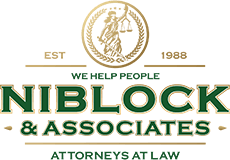Chapter 7 bankruptcy is the most common form of financial relief for debtors. A Chapter 7 bankruptcy discharges all debt owed by the debtor, outside of certain debts which are non-dischargeable. The Chapter 7 process usually takes three to four months and debtors can normally keep their personal assets.
Why Should the Debtor File Bankruptcy?
There are numerous reasons why a person would file Chapter 7 bankruptcy. Some debtors find themselves in situations where they have no other option but to file bankruptcy. One of the biggest reasons to file Chapter 7 is loss of income. Debtors are sometimes laid off or their salaries end up reduced. As a result of those actions, they are unable to keep up with their monthly expenses.
Divorce is another common reason that debtors file bankruptcy. In addition to the fact that a divorce divides two people into separate households and makes it significantly more difficult to survive on a monthly basis, the cost of the divorce and the effect the divorce has on the parties can lead them to bankruptcy.
Another common reason that people file Chapter 7 is that they have suffered severe health problems that have resulted in high medical bills that the debtor cannot afford. Some of these debtors miss many days of work as a result of the illness, which results in a double loss as the medical bills keep coming despite the paychecks stopping. When the debtor finds themselves in a situation like this, Chapter 7 becomes their best solution.
How Do I Qualify for Chapter 7 Bankruptcy?
The only true requirement of a Chapter 7 is that your income must be at or below the median income for a similar household size or else you must pass the Means Test. The Means Test takes your necessary monthly expenses (what bankruptcy law deems necessary) into your account, such as mortgage/rent, car payment, health insurance, utilities and income tax, etc. These expenses are then weighed against your gross monthly income for the previous six months and assuming your disposable income average is in the negative, you will qualify for Chapter 7.
If the result is not negative, you will have to find different relief, such as a Chapter 13. The Means Test is complicated, so having an experienced bankruptcy attorney to help is critically important. There are a few exceptions to the income requirement, but the vast majority of debtors will have to pass the income requirement to file a Chapter 7.
Assets and Their Effect on a Chapter 7 Bankruptcy
Assuming the income issue is resolved, the debtor should be able to get their debts discharged in a Chapter 7 without any problems. However, all debtors should ensure they understand their asset situation before filing a Chapter 7. Assets can range from furniture to jewelry, as well as numerous other personal items or accounts of value. The asset that is seized more than any other in a Chapter 7 by the trustee, who represents the interest of the creditors, are vehicles.
While the majority of debtors owe money on their vehicles and barely have any equity in their cars, there are some debtors who own their cars outright and have no creditor with a lien to satisfy. Depending on which state the debtor resides in, the exemptions provided by the bankruptcy court to shield their assets might not be enough to fully exempt the vehicle. States have vehicle exemptions that range from $1,000 to 10,000. If the debtor ends up in a situation where they own the car outright, the debtor will have to decide whether they can afford to make payments to the court to keep the vehicle, or instead surrender the vehicle to the court.
Homes are also commonly seized by the court if not exempted by the debtor or if the house is being surrendered by the debtor. Most states have exemptions that in large part protect homes. However, the smartest choice for a debtor to make would be to consult with an attorney prior to filing to ensure that assets are protected as thoroughly as can be done.
The 341 Meeting and What Comes After
After filing the Chapter 7 bankruptcy, the next step is the 341 meeting of creditors. This normally occurs 30-45 days after filing. The debtor is required to appear before the trustee and answer questions related to their case. These questions are designed to assist the trustee, who represents the creditors, in discovering any assets that the trustee can then seize and distribute to the creditors. After the meeting is concluded, the case is required to stay open for a minimum of 60 days so that the creditors have a chance to object to their debt being discharged. Most creditors do not object, but if one does, an adversarial proceeding would result and the court would decide whether the debt in question should be discharged or if the debtor should be forced to repay that specific debt.
A Chapter 7 Bankruptcy Can Be Complicated
A Chapter 7 bankruptcy can be complicated or straightforward. A debtor who intends to file should speak with an attorney to ensure that they are making the right decision, that they qualify for the Chapter 7, and that they understand their specific situation. If the debtor is properly prepared, their bankruptcy should be an easier than expected process for them and they will have genuine relief at the end of the case. If they are not prepared, the bankruptcy can be a rough and stressful ride for the debtor.


